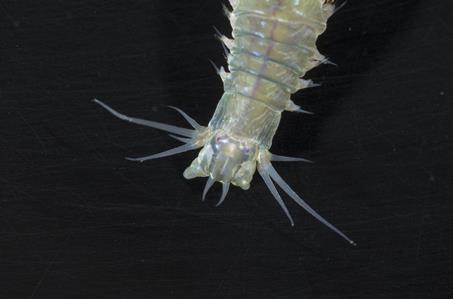General Description
In members of this genus there are short-bladed chaetae with a distinctive ball-and-socket articulation present in the dorsal bunch of chaetae on most segments starting at about 12-15 (these are referred to as "homogomph falcigers" in technical descriptions). Paragnaths are present, usually on both rings of the eversible phayrnx. This species can be distinguished by the absence of paragnaths on the oral ring. Two common Nereis species have bifid dorsal chaetae: Nereis bifida has paragnaths on most areas of the pharynx, while in Nereis maxillodentata the entire oral ring is bare of paragnaths. Body up to about 4 cm long.
Biology
Nereis bifida and Nereis maxillodentata are the two species of Nereis most commonly collected in southern Australia.
Habitat
Collected from a wide variety of habitats, intertidal to 200 m, occasionally deeper than 200 m.
Reefs
Seagrass meadows
Soft substrates
Distribution guide
South-eastern Australia, or south-western Australia.
Species Group
Depth
Shore (0-1 m)
Shallow (1-30 m)
Deep ( > 30 m)
Water Column
Max Size
4 cm
Commercial Species
No
Global Dispersal
Recorded in Australia
Species Code
MoV 402
Identify
Conservation Status
- DSE Advisory List : Not listed
- EPBC Act 1999 : Not listed
- IUCN Red List : Not listed





